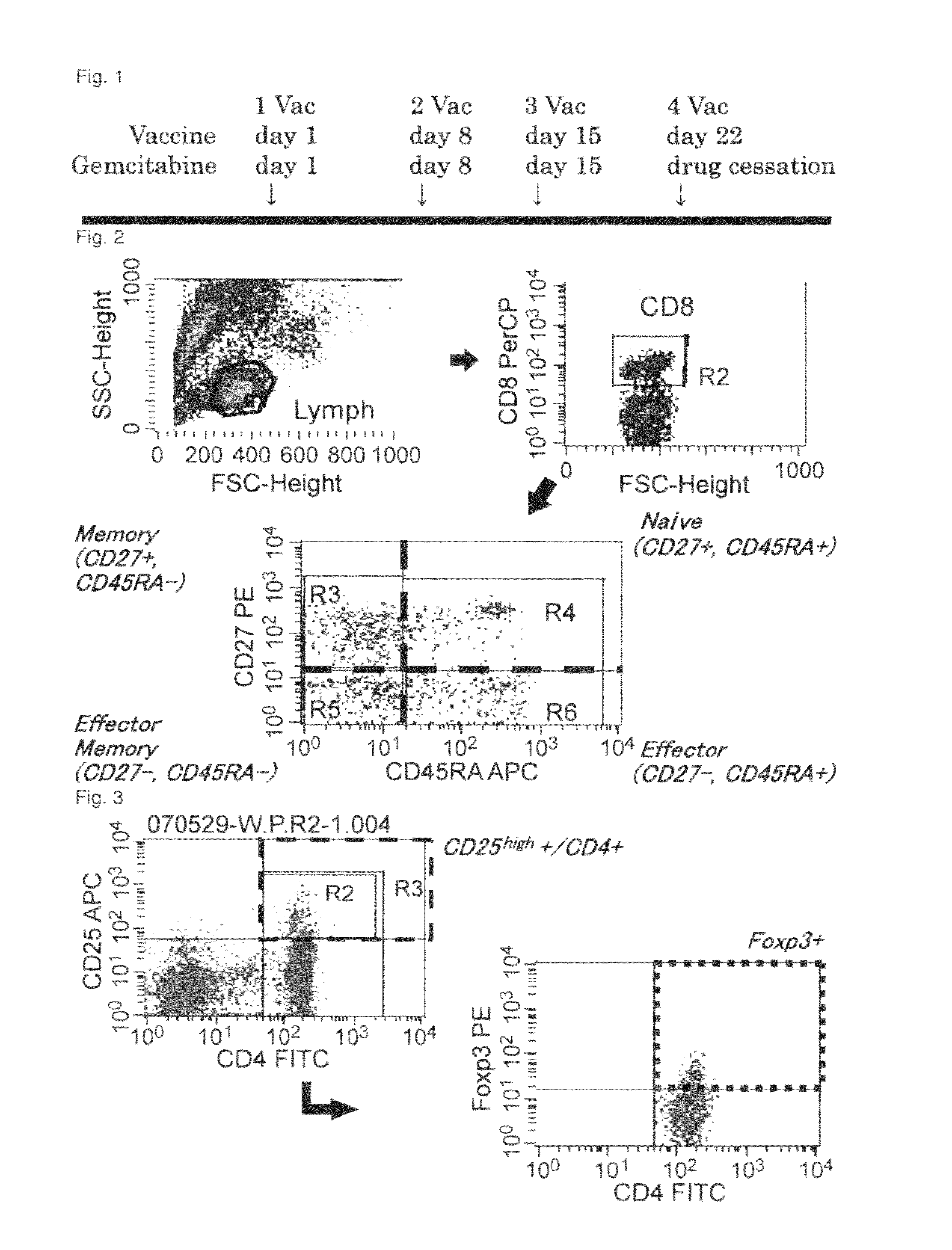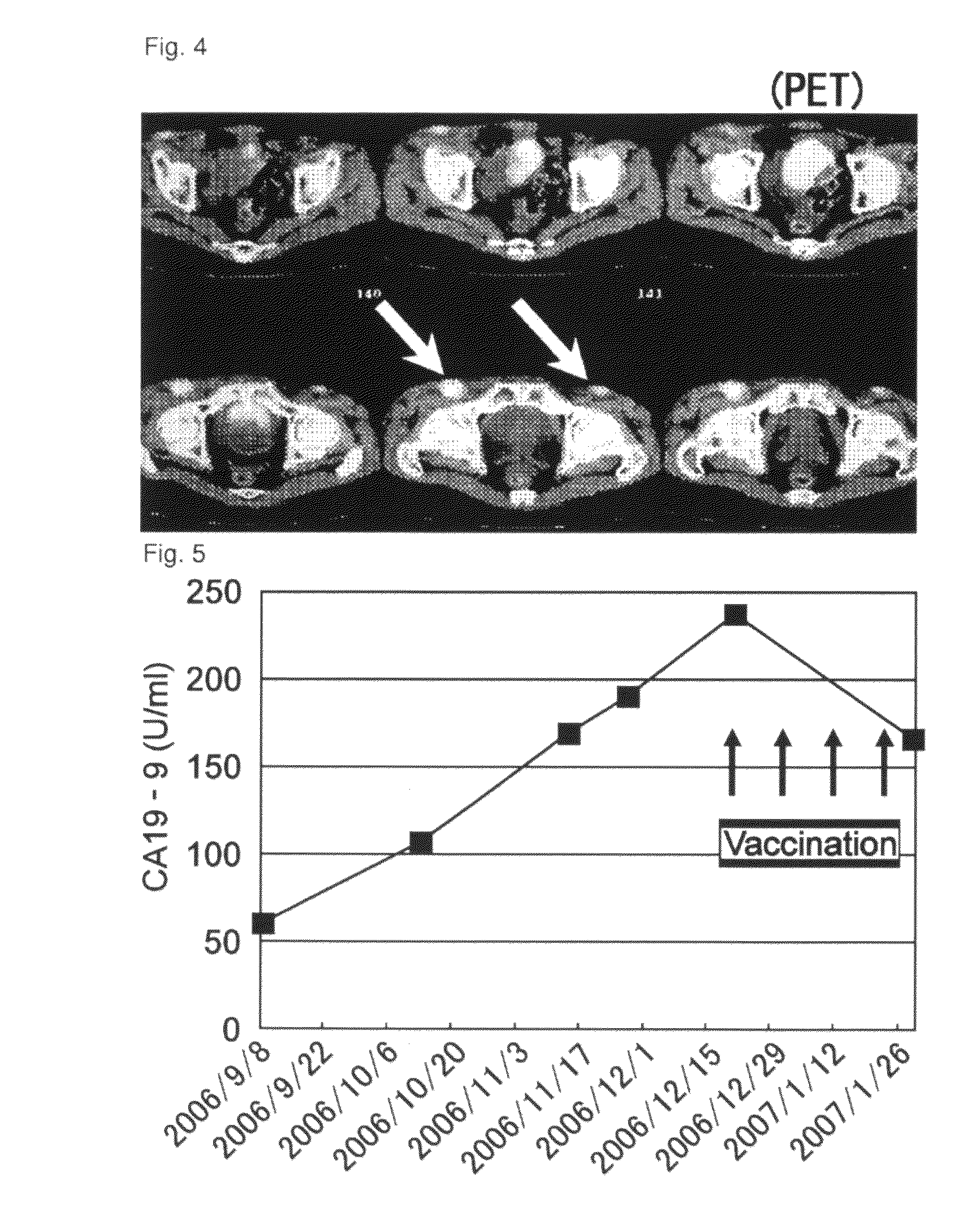Combination therapy for pancreatic cancer using an antigenic peptide and chemotherapeutic agent
a combination therapy and pancreatic cancer technology, applied in the field of pancreatic cancer combination therapy, can solve the problems of poor response to current therapeutic methods, difficult early diagnosis, no identified tumor markers that allow reliable screening, etc., and achieve the effect of enhancing the therapeutic effect of chemotherapy
- Summary
- Abstract
- Description
- Claims
- Application Information
AI Technical Summary
Benefits of technology
Problems solved by technology
Method used
Image
Examples
case 1 (
[0180Level I / 0.5 mg)
[0181]Case 1 is a sixty-eight-year-old female who was previously treated with chemotherapy using TS-1, became unresponsive, and registered thereafter in the instant trial. Two courses were carried out but systemic adverse events were absent, and local adverse events at the site of vaccination were also absent (Table 1, see below). Image assessment was PD. Tumor markers also increased. According to immunologic monitoring, specific CTL reaction against the administered peptide was not observed (Table 2, see below). Before vaccination, it was within the normal range of regulatory T cells (normal average is 3.9+ / −1.2%), but an increase beyond the normal range was observed after one course and also after two courses (Table 6, see below). The patient died due to aggravation of the original disease 3.3 months after the initial vaccination.
case 2 (
[0182Level I / 0.5 mg)
[0183]Case 2 is a sixty-six-year-old male who received two vaccinations but was transferred to another hospital at his own request, and subsequently dropped out of the trial (Table 1, see below). Systemic adverse events were absent, and local adverse events at the site of vaccination were also absent.
case 3 (
[0184Level I / 0.5 mg)
[0185]Case 3 is a sixty-four-year-old male. One course was carried out. Grade 3 neutropenia and hepatic dysfunction were observed as systemic adverse events (Table 1, see below). Withdrawal of gemcitabine for one week allowed recovery from both conditions, and administration was then continued. Grade 2 induration and redness at the site of inoculation were observed and lymphadenopathy (inguinal swelling) near the inoculation site was observed as local adverse events. Image showing strong accumulation was observed at the swollen site using PET (FIG. 4), and histopathologically strong inflammation was observed as a result of biopsy, suggesting at an immune response in response to peptide inoculation. Image assessment was SD and the tumor marker (CA19-9) decreased (FIG. 5). According to immunologic monitoring, specific CTL reaction against the administered peptides was observed (FIG. 6), and in CD8-positive T cell fraction analysis, an increase was observed in the N...
PUM
| Property | Measurement | Unit |
|---|---|---|
| PET | aaaaa | aaaaa |
| CT | aaaaa | aaaaa |
| length | aaaaa | aaaaa |
Abstract
Description
Claims
Application Information
 Login to View More
Login to View More - R&D
- Intellectual Property
- Life Sciences
- Materials
- Tech Scout
- Unparalleled Data Quality
- Higher Quality Content
- 60% Fewer Hallucinations
Browse by: Latest US Patents, China's latest patents, Technical Efficacy Thesaurus, Application Domain, Technology Topic, Popular Technical Reports.
© 2025 PatSnap. All rights reserved.Legal|Privacy policy|Modern Slavery Act Transparency Statement|Sitemap|About US| Contact US: help@patsnap.com



